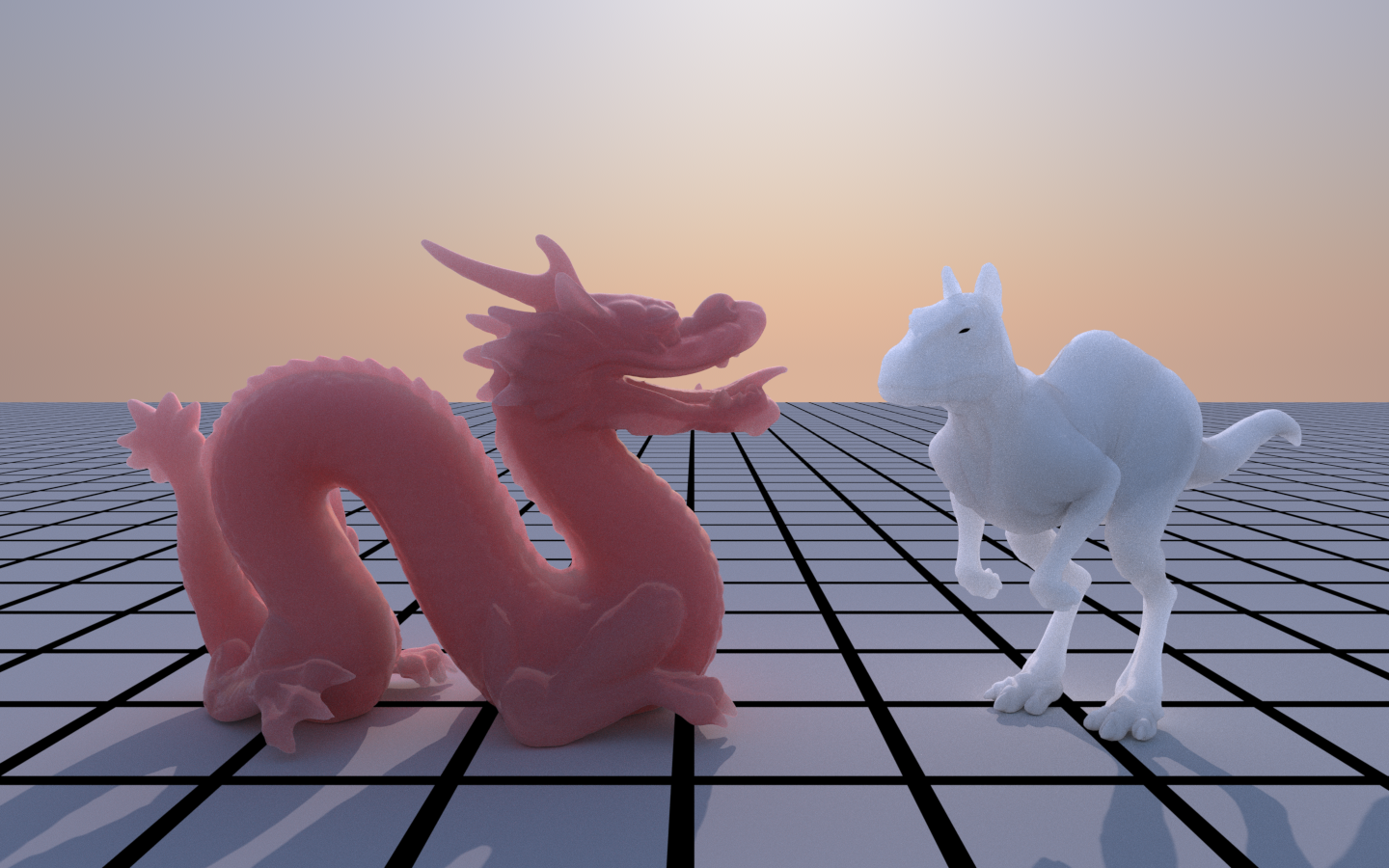Translucent Material for Subsurface Scattering
I’ve created a translucent material type for Imagine which allows a more artist-friendly way of specifying the colour and transparency of translucent objects, without having to work out the very unintuitive (until you understand what’s going on internally) absorption and scattering coefficients that control the medium interaction for scattering events and the resulting transmission.
I’m pretty certain it’s not physically-accurate, but it seems to give pretty pleasing results, although I’m still not convinced of the correctness of my implementation, as it’s very easy to produce extremely noisy results.
I got a copy of Volume Rendering for Production for Christmas, so I’m going to be looking into heterogeneous volumes in the future.

